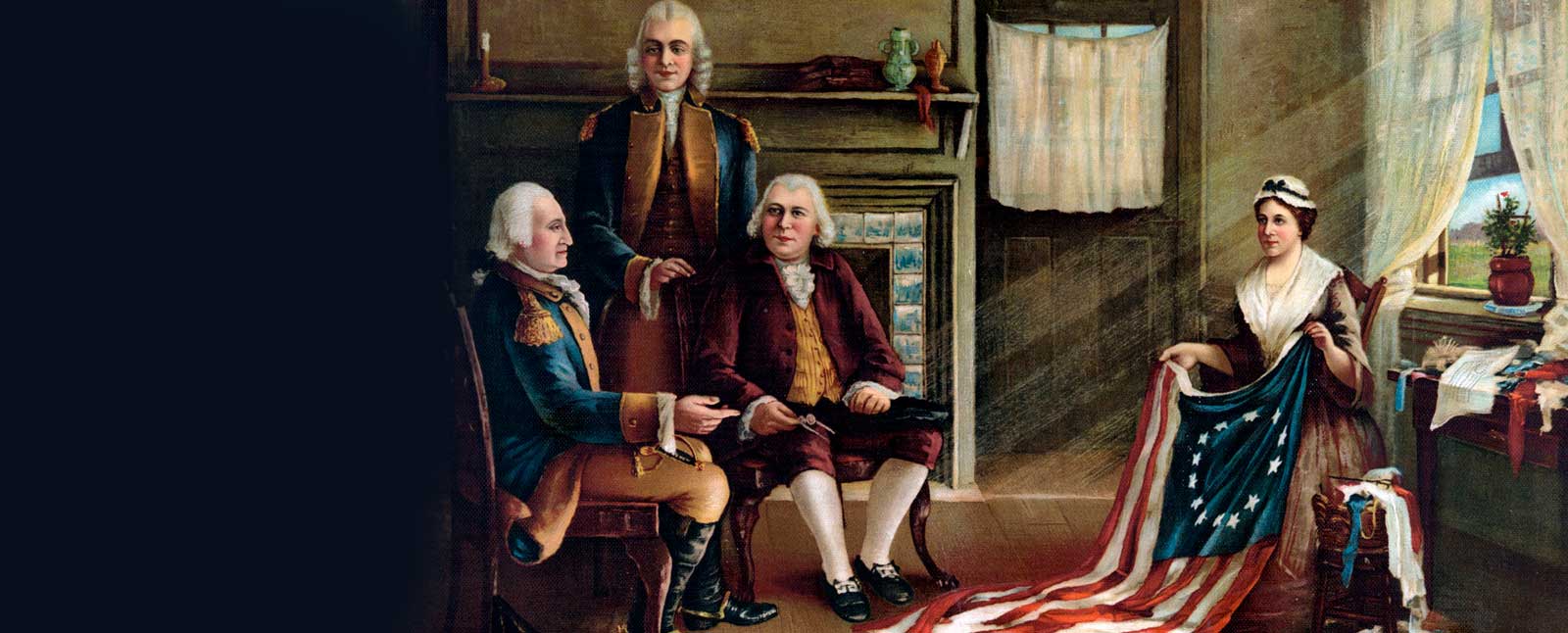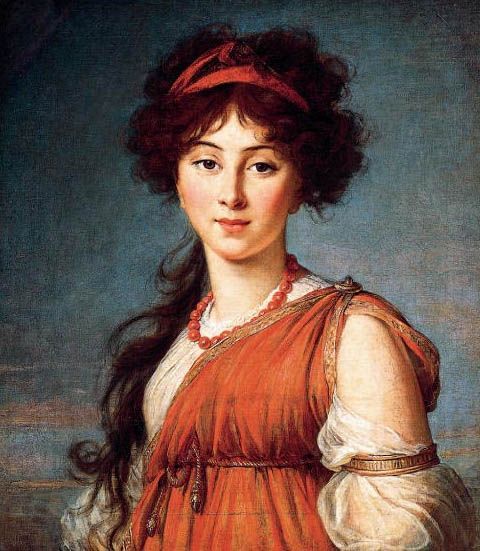Union and Liberty in Early America, Part I

James Danielson, PhD
Anne-Louise Germaine de Stael-Holstein (1766-1817), known as Madame de Stael (commonly pronounced “de Stall”), was a French writer and political theorist whose writings were widely read in her lifetime and long after. She was alarmed at Napoleon’s belligerent adventures in Europe and wrote to him aggressively about it, which prompted Bonaparte to demand of his servants that they bring him no more of her writings. This led to the often-repeated quip that “there are three great powers struggling against Napoleon for the soul of Europe: England, Russia, and Madame de Stael.” In her book Considerations on the Principal Events of the French Revolution, de Stael wrote the following influential paragraph.

It is of importance to repeat to those who are the advocates of rights founded on the past, that it is liberty which is ancient, and despotism which is modern. In all the European states founded at the commencement of the middle age, the power of the king was limited by that of the nobles. The Diets in Germany, in Sweden, in Denmark before its charter of servitude, the Parliaments in England, the Cortes in Spain, the intermediate bodies of all kinds in Italy, prove that the northern tribes brought with them institutions which confined the power to one class, but which were in no respect favorable to despotism.
Liberty is ancient; despotism is modern. This observation, Madame de Stael insists, is true not because people have somehow grown coarser over time, but because Europe in her time was losing the intermediary institutions between government and the individual that limited the power of rulers to control the lives of their subjects. Historians report, for example, that throughout the Middle Ages, rulers could rarely manage to take more than 7% of their subjects’ wealth. In the Middle Ages, the intermediary institutions included a class of nobles who checked the actions of kings in defense of their own social prerogatives, an international Church with a powerful pope who could challenge wayward kings and princes, and independent cities and districts that kept political power diffuse, resisting the tendency toward centralization. With so many independent jurisdictions in Europe, a ruler who became greedy for power could find himself in a difficult stand-off with the pope while his tax base moved down river to neighboring jurisdictions. The tyrannical designs of Napoleon that animated Madame de Stael were part of a movement particularly strong in the 18th and 19th centuries to consolidate the many independent jurisdictions of Europe, usually by force, into centralized national states in which power that was once diffused came to be held in one place by only a few hands. This is how the modern national state developed in Europe, and it did so by destroying the power of intermediary institutions, leaving the individual alone before the largely unchecked power of the state. This is what Madame de Stael means by saying that despotism is modern. While governments have always acted despotically, their power to oppress was limited by the intermediary institutions that were neutralized by the consolidating aggression of the emergent modern national states, and so in the political order, the ability of states to oppress their citizens is practically unrestrained.[i]
The British who settled Jamestown, Virginia in 1607 were inheritors of a monarchical legal order transplanted into a world that was foreign to them, having none of the physical and political advantages that characterized life in the Mother Country. Yet theirs was a tradition in which developed the idea of rights that human beings hold by nature, independent of any grant from government, and so serving to limit state power. However, rights may be exercised properly only within a living cultural tradition because they serve to regulate our relations one with another in a social bond of ordered liberty. Rights may be understood to be acts which are in themselves good, and which it would be unjust for others to prohibit. Thus in the theory of rights, one cannot morally possess a right to do what is wrong, and this insight lies at the heart of the ideal of “ordered liberty.” Here we find a cause of variety among communities that recognize and protect natural rights. Rights are expressed and exercised in the community of others and for this reason, communities must engage in ongoing discussions of which acts to protect and how, which acts to forbid, and which to allow even if there is no right to them. The various ways in which communities do this will give to each its own kind of character. This practice took an American shape by the fact that the first settlers from Britain politically were monarchists in a land without a king. This compelled them to develop institutions of self-government that were certainly guided by British law, but could be, owing to their new situation, given uniquely American forms. In this way, the American colonies developed into states through peaceful processes and not through acts of military force. In short, American states grew “organically,” and this resulted in the people of each state coming to see themselves as one people, and their state as their country, the place where they live out in an ordered way the blessings of liberty. The late, and brilliant, political theorist Willmoore Kendall stated this succinctly writing: “No one understands America, and the meaning of America, unless he understands that it was conceived in liberty—nay, born in liberty, nurtured in liberty, and grown to fullness and maturity in liberty.”[ii]
Americans came to see sovereignty, which is the authority to govern without the permission of another, as resting in the people of each state, who acted as political societies through their legislatures, but importantly, through conventions of the people of each state, rather than in the British system wherein sovereignty rested in the national legislature, ostensibly through the king. This is why the Virginia Declaration of Rights in Virginia’s constitution of 1776 makes clear that the people of the Commonwealth possessed the absolute authority to abolish their government and replace with another of their choosing should it became abusive of their rights. James Madison put this point clearly in his justly admired “Report of 1800” to the Virginia General Assembly: “The authority of constitutions over governments, and the sovereignty of the people over constitutions, are truths which are at all times necessary to keep in mind; and at no time perhaps more necessary than at the present.” It should be said, moreover, that while Americans in our early history were concerned to protect their liberty from European-style consolidation and centralization of power, they thought that the best way to preserve liberty was within the federal union. This sentiment was expressed by John C. Calhoun who gave a famous toast to friends at a banquet while he was vice president: “To the Union! Next to our liberty, most dear.”
The idea that sovereignty rests in the people of a state and not in a national government derives from the view that each individual owns him- or herself (John Locke). A better way to say this is that no human being has a natural proprietary interest in any other human being. So, while an individual may not own himself as property, it remains true that as between one human being and another, I own me, and you own you. For this reason, no human being is available to the use of another human being without his consent. But, as we have already observed, there must be a balance of interests between the individual and the community. May an individual assert rights the enjoyment of which is detrimental to the community? May the community justifiably regulate rights the unrestrained expression of which undermines it? These are not trivial questions but rather among the very questions people must confront if they are to establish and maintain a political order that at once preserves union and liberty. In the next issue of “Front and Center,” we will consider how Americans in our early history addressed this important question of the proper relation of union and liberty among the states.
[i] One might object to the idea that the state is a modern phenomenon by pointing to the ancient Greek city-states. “City-state” is an unfortunate translation of the word polis which was understood to be the home of the politeia, or the social and governing order of the society. Plato’s famous dialog “Republic” is actually titled “Politeia.” So while the ancient Greek cities were independent and self-governing, they were not states as we have them today. The first appearance of the word “state” as a political unit is found in The Prince by Niccolo Machiavelli, written in 1513.
[ii] Willmoore Kendall, “Equality: Commitment or Ideal?,” Intercollegiate Review, volume 24, Spring 1989, 25-33.
Posted on: June 23, 2022


